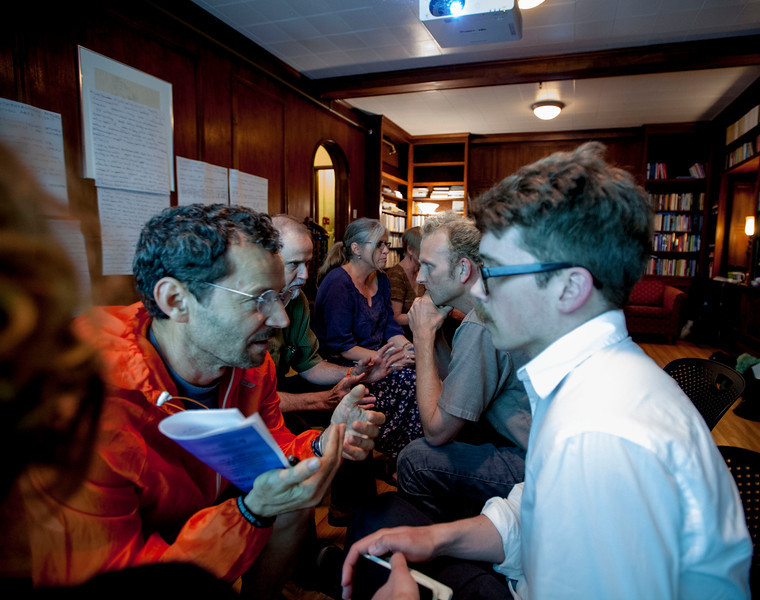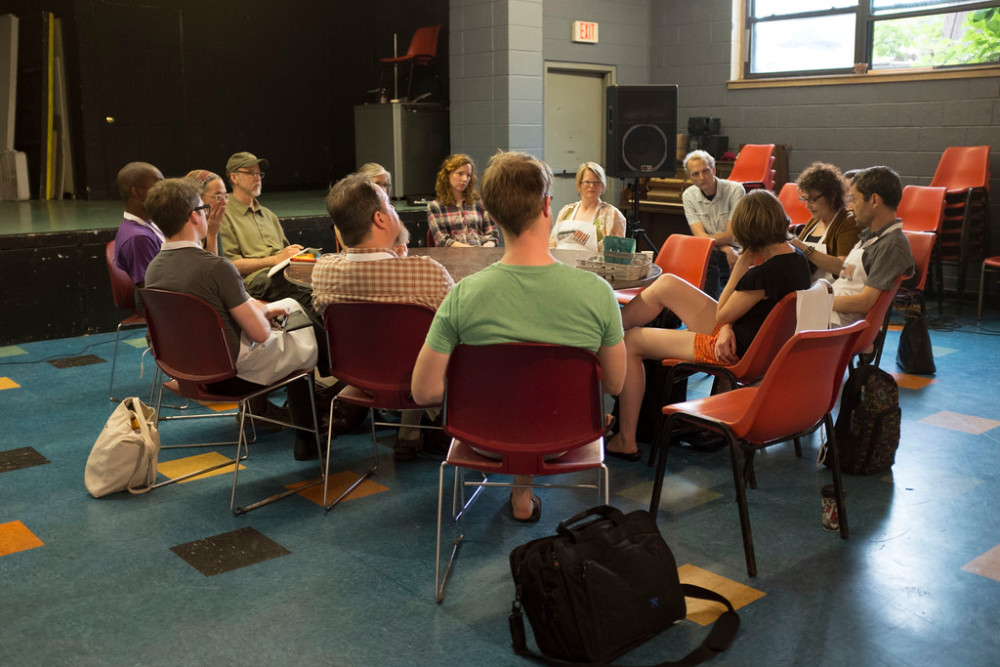Problem Solving Social Practice in Art
The role of the artist in society has long been debated. If an artist works in a university in combination with community partners, that role becomes even more complex. Led by co-directors Anita Jung (Art & Art History) and John Engelbrecht (PS1), the group of scholar-artists and independent artists cast a wide net, examining exciting new developments in the field of social practice art.
Questions that arose throughout their week together (June 16–20, 2014) included:
- What is the potential for art outside commercial galleries?
- How does academia recognize artist-scholars whose work is community based and may not produce traditional pieces of art?
- How can artists most clearly represent the scope and intention of their work to potential collaborators?
- How does the nature and impact of art change depending on location—from the Venice Biennale to a community garden?
Many of the participants were transitioning between artistic mediums and modes of expression, while also exploring how social practice projects intersect with their more traditional work. As an example, Lane Hall and Lisa Moline, both of the University of Wisconsin–Milwaukee, have long careers as printmakers and installation artists. Since 2011, they have also been at the helm of the Overpass Light Brigade (OLB), a now-international network that uses neon signs as a form of protest. The relationship between their political art and their academic work raises powerful questions about the place of art in contemporary society and in academe.
 This stunning group of diverse artists are tethered by their commitment to nimbly negotiating different worlds—political and governmental venues, educational systems, museums, prisons, and nonprofit organizations. Jung explains that their participation in far-flung disciplines and systems indicates not only their pleasure in collaboration, but also nonartists’ growing awareness that artists bring a great deal to any table. “Artists question and contribute a different perspective,” she says. “Collaboration is uncomfortable, and we are good at being uncomfortable.”
This stunning group of diverse artists are tethered by their commitment to nimbly negotiating different worlds—political and governmental venues, educational systems, museums, prisons, and nonprofit organizations. Jung explains that their participation in far-flung disciplines and systems indicates not only their pleasure in collaboration, but also nonartists’ growing awareness that artists bring a great deal to any table. “Artists question and contribute a different perspective,” she says. “Collaboration is uncomfortable, and we are good at being uncomfortable.”
The fact that PS1 and the University of Iowa were able to partner on the Obermann Summer Seminar was itself a wonderful demonstration of a successful collaboration, said Laurie Beth Clark (Art, University of Wisconsin–Madison). “PS1 is a model for a small space that is appropriately scaled to its community,” says Clark, who has served as an administrator in addition to her role of scholar and artist. “It’s very challenging for a large R1 institution to partner successfully with a small organization and not crush it.”
For a photo gallery of the week’s events, visit here.
Outcomes
- Jung and Engelbrecht are producing a web site that includes conversations and video profiles captured during the week, as well as manifestos and other “rules” for best practices created by the group.
- Participants continued to meet after the seminar, forging plans for future projects.
- During the week of the seminar, Traci Molloy, an independent artist from Brooklyn, NY, worked with students at United Action for Youth on a photography and writing project. The final result, a large-scale, composite work, will be displayed in Iowa City during fall 2015, when Molloy will return for public talks and workshops.
Learn more about our Summer Seminars here.
